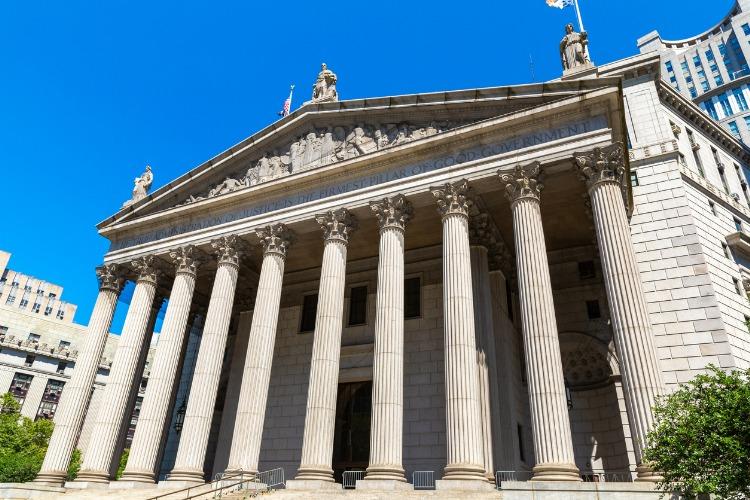How Federal Buildings Are Converging Their Cyber And Physical Technologies For Futureproof Security
Since 2020, cybersecurity attacks have been considered among the top 5 risks to business health and are now common in businesses in both public and private sectors.
Want to know how federal buildings are tackling the modern security landscape?
Keep reading as we discuss how federal buildings are converging their cyber and physical technologies for futureproof security and how you can equip your business against future threats.
Access Control And Video Security To Protect Sensitive Data
Access control is a staple in any physical security strategy and can be incorporated into your cybersecurity strategy. By implementing access control to protect digital resources in your building, you can combine physical and cybersecurity for a more robust overall approach.
Access control, however, has one major vulnerability. If an unauthorized user steals access credentials, they may be able to use them to enter the building, and there will be no measures to prevent them from accessing your sensitive resources. Additionally, there will be no evidence to prove that the credentials were misappropriated.
To minimize this risk, you should consider installing video security to protect areas in your building housing sensitive data and assets. This way, if someone steals access credentials to enter your server rooms, ONVIF cameras will provide evidence of this incident.
Opting for a cloud-based camera system will enable you to integrate facial recognition software and access control with your cameras. If the user’s identity does not match the access control credentials they are using; this will trigger an alert, allowing your security team to intervene.
Coordinating Cyber And Physical Security Teams
One of the best ways to create a futureproof security strategy to contend with the threats of the modern security climate is to coordinate cyber and physical security teams.
In a typical security infrastructure, where both teams are housed separately, it can be difficult for both teams to know which security threats fall under their jurisdiction. And, since cloud-based technologies are becoming increasingly popular, many security threats can be physical and digital.
Housing both teams separately also creates data silos, making it more difficult for the teams to communicate and collaborate, as information will be less accessible. By combining both teams, you stand to gain the following benefits:
- More communication - your physical and cyber security teams will be able to communicate on security procedures, ensuring each team knows which threats fall under their jurisdiction for faster response.
- More collaboration - for security events that are both physical and digital, your teams can work together to resolve the issue rather than submitting requests for assistance, which could slow the process down.
Integrating Cybersecurity Policies Into Physical Security Hardware
Regarding your physical security strategy, it’s important to remember that your digital assets are vulnerable to internal-origin security threats. For instance, an employee, visitor, interviewee, or contractor, might gain access to your server rooms, causing a significant security breach.
This is where zero trust comes in. A zero-trust cybersecurity policy does not imply the trustworthiness of every user on the network, simply by the merit of them being granted access to the network.
Rather than give network users free-reign access to all company network resources, a zero-trust policy grants each varying user permissions based on their role.
If a security breach does originate from their account, it will only reveal a limited amount of information.
The same goes for your physical security policy. Since you cannot guarantee that every employee, visitor, or interviewee will not access your server rooms and cause a security breach, you should limit access to these areas with role-based access control. Their access cards will have role-based permissions, only allowing them to access the areas they need to carry out daily operations.
Automation And Workflows
Combining physical and cyber security teams allows you to implement AI and analytics for physical security. Below, you will find two of the most practical applications of AI and analytics in security.
Analytics For Surveillance Cameras
Surveillance cameras typically serve two main functions for federal buildings - to deter criminals from attempting to enter the property to commit a crime and to provide evidence should a crime occur on your property.
With video analytics, you can ensure that your surveillance cameras are instrumental in threat detection, allowing you to spot and resolve potential security threats before an incident occurs. Your security staff is unable to consistently monitor the surveillance camera feed, which means they will likely miss a security incident that occurs.
Video analytics performs monitoring automatically, sending a mobile alert to notify your team of a potential threat - allowing them to initiate response procedures and prevent the incident from progressing.
Automated Security Workflows
Incident response procedures must be fast-acting for more successful resolution of security threats. Automated security workflows help to hasten incident response procedures by automatically generating security workflows based on your pre-established security response procedures and assigning these workflows to an available team member. Many federal building security is integrated with the city’s so that when a problem is detected at nearby traffic surveillance cameras, it would automatically send that information to the federal building’s security team to take the appropriate action such as a building lockdown if there is an imminent threat.
Performing this process manually would take considerably more time, making your incident response protocols less effective.
Summary
If you’re looking to improve your security strategy by merging cyber and physical security, you should pay attention to how federal buildings are futureproofing their safety. Coordinating cyber and physical security teams will allow you to build a security strategy that integrates physical and digital technologies, creating a security strategy suitable to withstand the modern threat climate.

